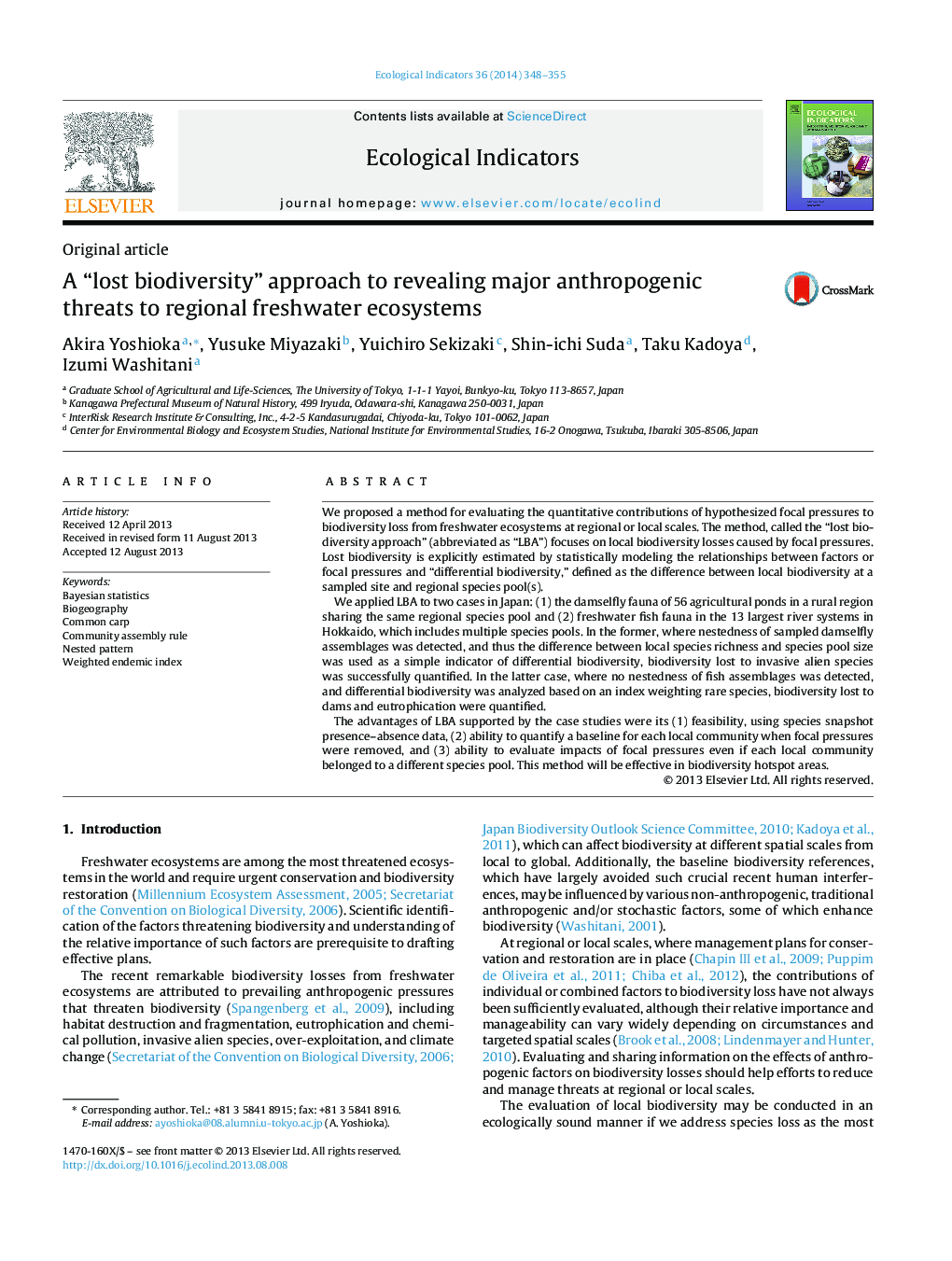| کد مقاله | کد نشریه | سال انتشار | مقاله انگلیسی | نسخه تمام متن |
|---|---|---|---|---|
| 4373327 | 1617164 | 2014 | 8 صفحه PDF | دانلود رایگان |
• A method to evaluate impacts of focal pressures to biodiversity loss is proposed.
• The evaluation can be executable by snapshot data and knowledge of biogeography.
• Impacts by pressures in a region including multiple species pool can be clarified.
• Two case studies in Japan successfully demonstrated the method.
We proposed a method for evaluating the quantitative contributions of hypothesized focal pressures to biodiversity loss from freshwater ecosystems at regional or local scales. The method, called the “lost biodiversity approach” (abbreviated as “LBA”) focuses on local biodiversity losses caused by focal pressures. Lost biodiversity is explicitly estimated by statistically modeling the relationships between factors or focal pressures and “differential biodiversity,” defined as the difference between local biodiversity at a sampled site and regional species pool(s).We applied LBA to two cases in Japan: (1) the damselfly fauna of 56 agricultural ponds in a rural region sharing the same regional species pool and (2) freshwater fish fauna in the 13 largest river systems in Hokkaido, which includes multiple species pools. In the former, where nestedness of sampled damselfly assemblages was detected, and thus the difference between local species richness and species pool size was used as a simple indicator of differential biodiversity, biodiversity lost to invasive alien species was successfully quantified. In the latter case, where no nestedness of fish assemblages was detected, and differential biodiversity was analyzed based on an index weighting rare species, biodiversity lost to dams and eutrophication were quantified.The advantages of LBA supported by the case studies were its (1) feasibility, using species snapshot presence–absence data, (2) ability to quantify a baseline for each local community when focal pressures were removed, and (3) ability to evaluate impacts of focal pressures even if each local community belonged to a different species pool. This method will be effective in biodiversity hotspot areas.
Figure optionsDownload as PowerPoint slide
Journal: Ecological Indicators - Volume 36, January 2014, Pages 348–355
